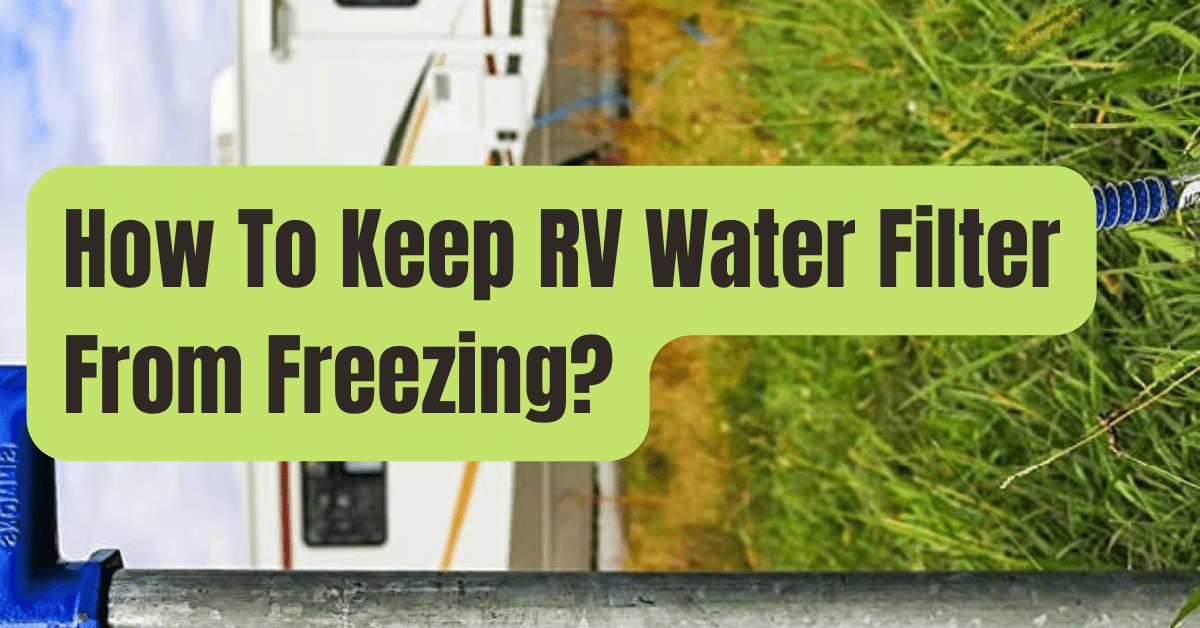Yikes! In our region, the temperature is beginning to drop, and a freeze warning is in effect just to the north of us.
Since we live full-time in the north, we don’t leave until mid-October, long after the first freeze and the first snowfall.
It’s time to check the furnaces, put the hot water hose on, turn on the water filter heater blanket, and take away the portable heaters.
These suggestions may need to be improved upon for lower temperatures or longer timeframes as we have only briefly tented in temperatures as low as 15 degrees.
Warmed Hose
A heated hose that connects into a 120 volt outlet maintains the fluidity of the water within.
Unless the water is running or the water filter(s) are secured, it won’t keep a water filter defrosted.
The RV park where we were staying in Utah near Bryce Canyon informed us with confidence that it would ice that night.
We placed our heated hose on with confidence.
The morning after, there was no water.
We discovered that the heated hose had to be attached directly to the campground’s water tap.
The heated hose was attached to the blue water filter after we had placed it at the campsite tap.
No water even reached the heated hose because the water filter froze solid.
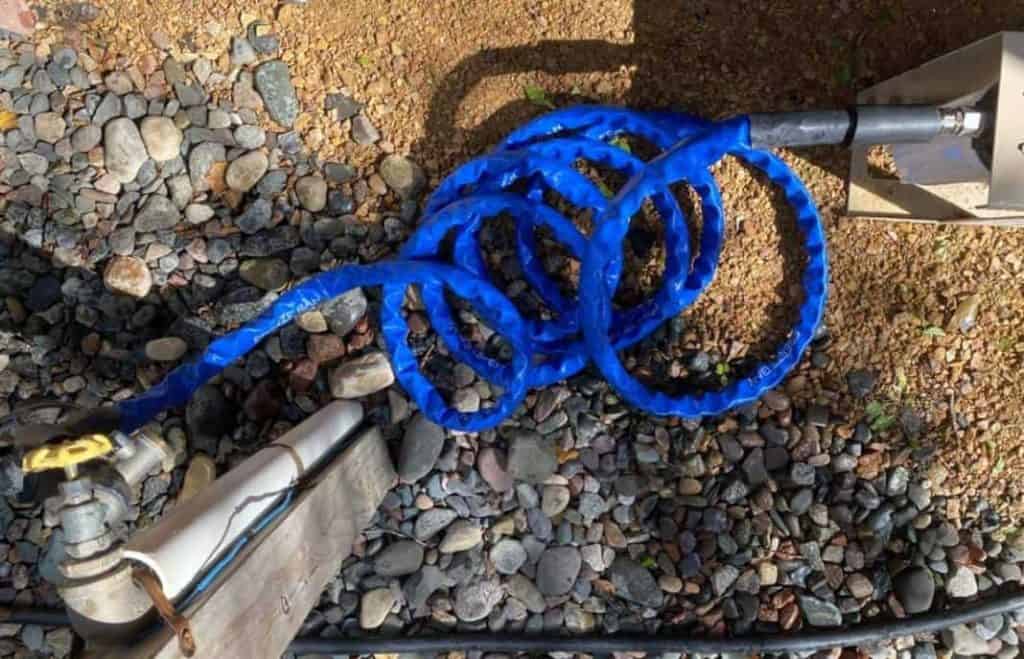
Heating Blanket
We also need to prevent the two-stage outside water filter unit from freezing.
Our current device is large and has two ten-inch filters inside of a durable shell.
In order to keep liquids flowing, we discovered an electric thermal barrel warmer that is often used to wrap barrels.
I lightly cover our water filter unit to prevent it from becoming too hot and perhaps melting the water filter containers since this specific barrel heater lacks a thermostat to adjust the heating temperature.
The barrel heater keeps the water flowing and the filters heated.
When nighttime temperatures are predicted to drop drastically, I cover the whole unit with a tarp to prevent the faucet ends from freezing.
Although there may be many alternative choices, we tend to like this one.
Not only are we looking for a warm, nice place to hang out, but so are the little, outdoors animals, both furry and not so hairy.
A bird and a few mice have been seen attempting to cuddle up to the heated blanket.
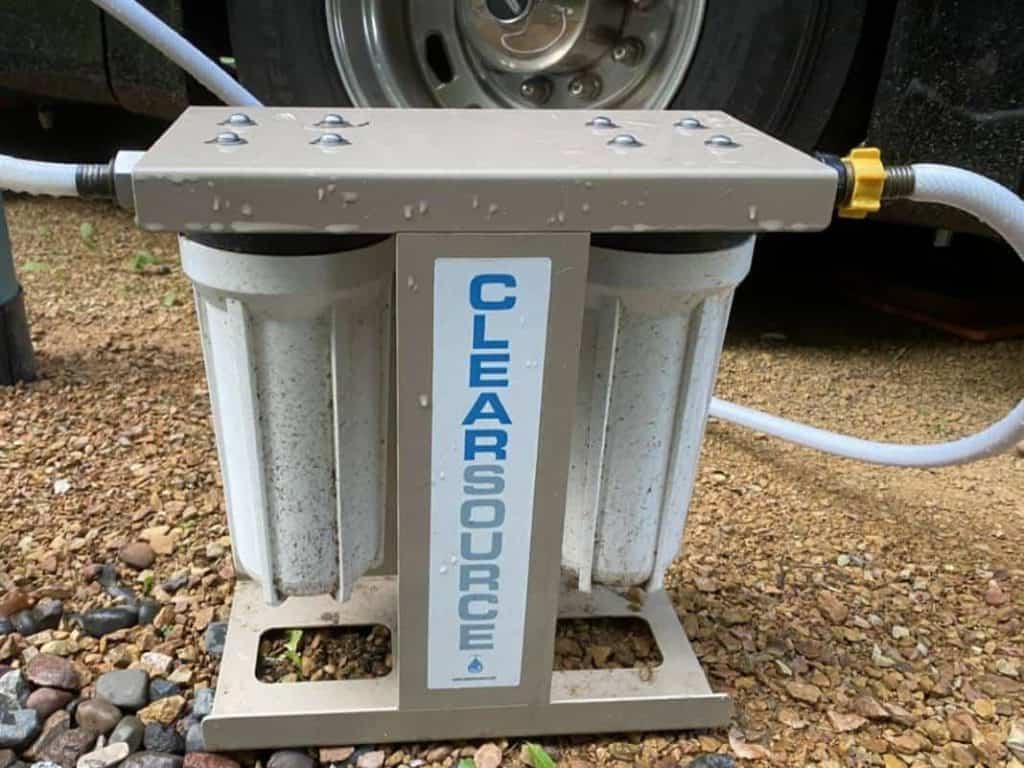
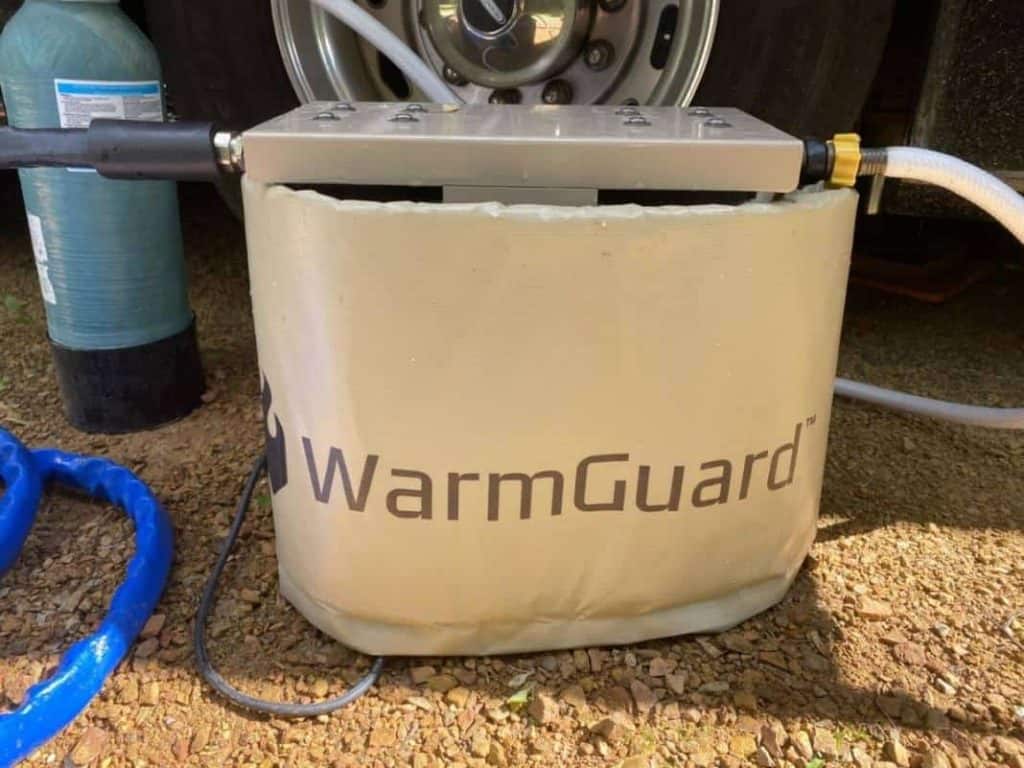
Bay of Water
Also in danger is the water bay with all the water hookups.
Ours has heat, but only when the gas furnace in the back is turned on.
If the temperature is not below 25 degrees, we will turn on the furnace in the evening and first thing in the morning.
We’ll program the furnace to turn on at night if the forecast calls for temperatures lower than that.
In order to safeguard the bay, we may also install our water softener there.
In order to protect the water bay from freezing, an antique incandescent light bulb might be placed within the bay.
If you go with that approach, be sure nothing that might burn or melt is immediately touched by the light.
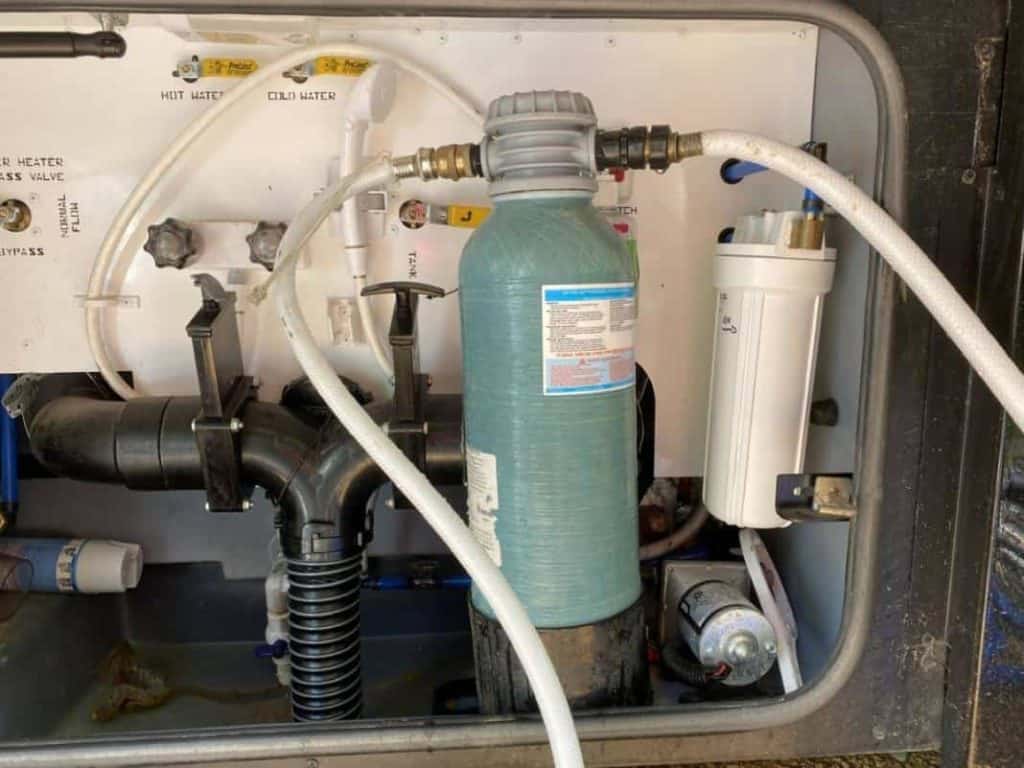
Storage Tanks
We don’t have to worry about keeping our tanks warm since they are insulated and placed between the interior and outside floors of the camper.
Fortunately, some individuals will have to make this effort since they have exposed tanks.
To keep their tanks warm, some people place a floodlight with an incandescent lamp beneath their RV.
Additionally, I’ve heard that using an electric blanket will work.
Keep The Tanks For Gray And Black Water Closed
I’ve heard terrifying tales of folks who, in a severe frost, left the gray water tank valve open, causing the whole sewage pipe to freeze and need hairdryer heating.
Open The Cabinets Within
We open the cabinet doors on the inside, where the plumbing lines reside, as an added measure of safety.
This keeps the heated air moving.
I also open the doors to the dishwasher and washing machine to offer warmth when possible.
Cut Off The Water
In certain cases, turning off the water at night is the wisest course of action.
A Texas campsite this year took things very seriously.
The lesson of the tale? Open the cupboard doors, fill your water tanks, and remain toasty!

